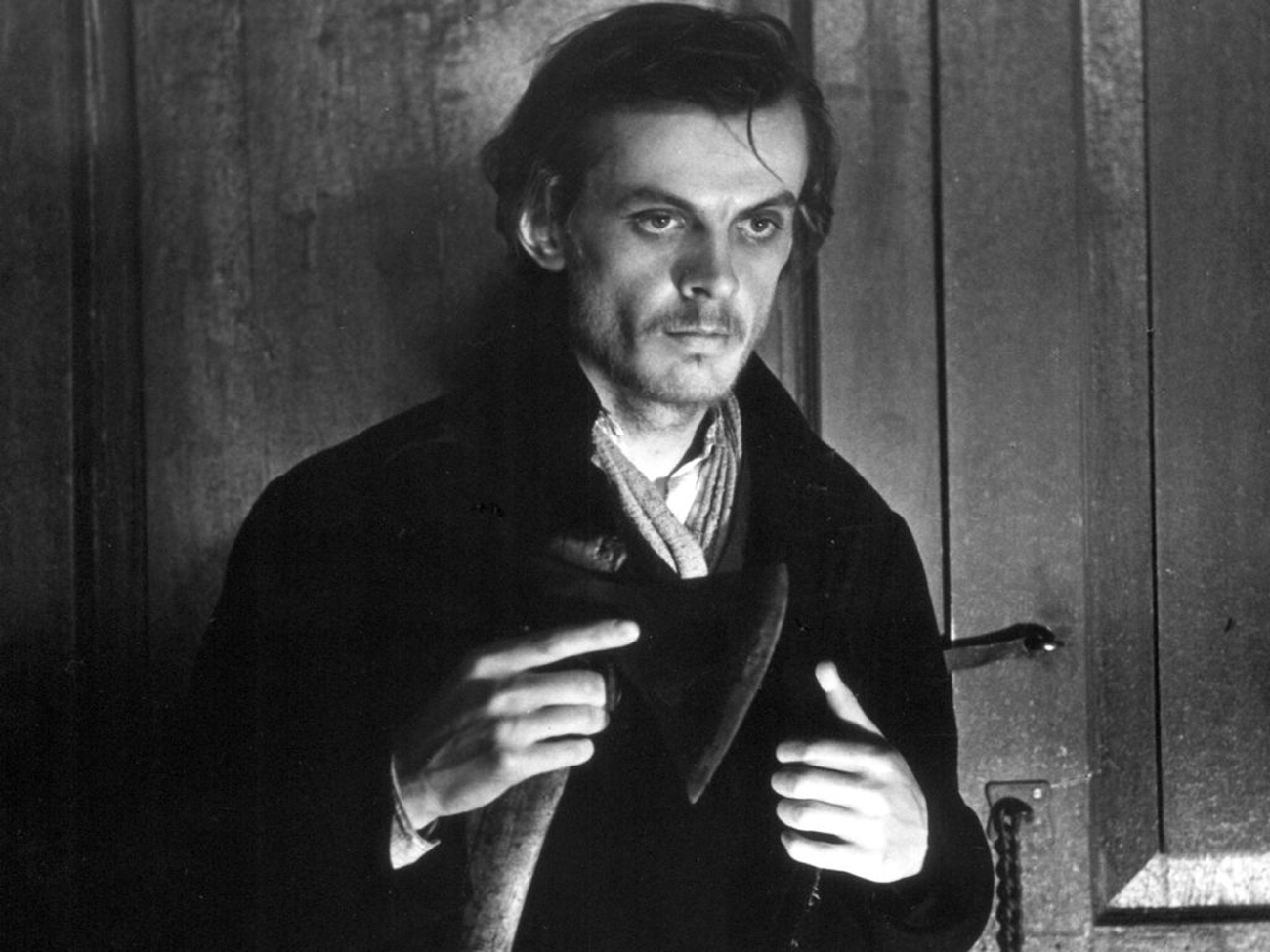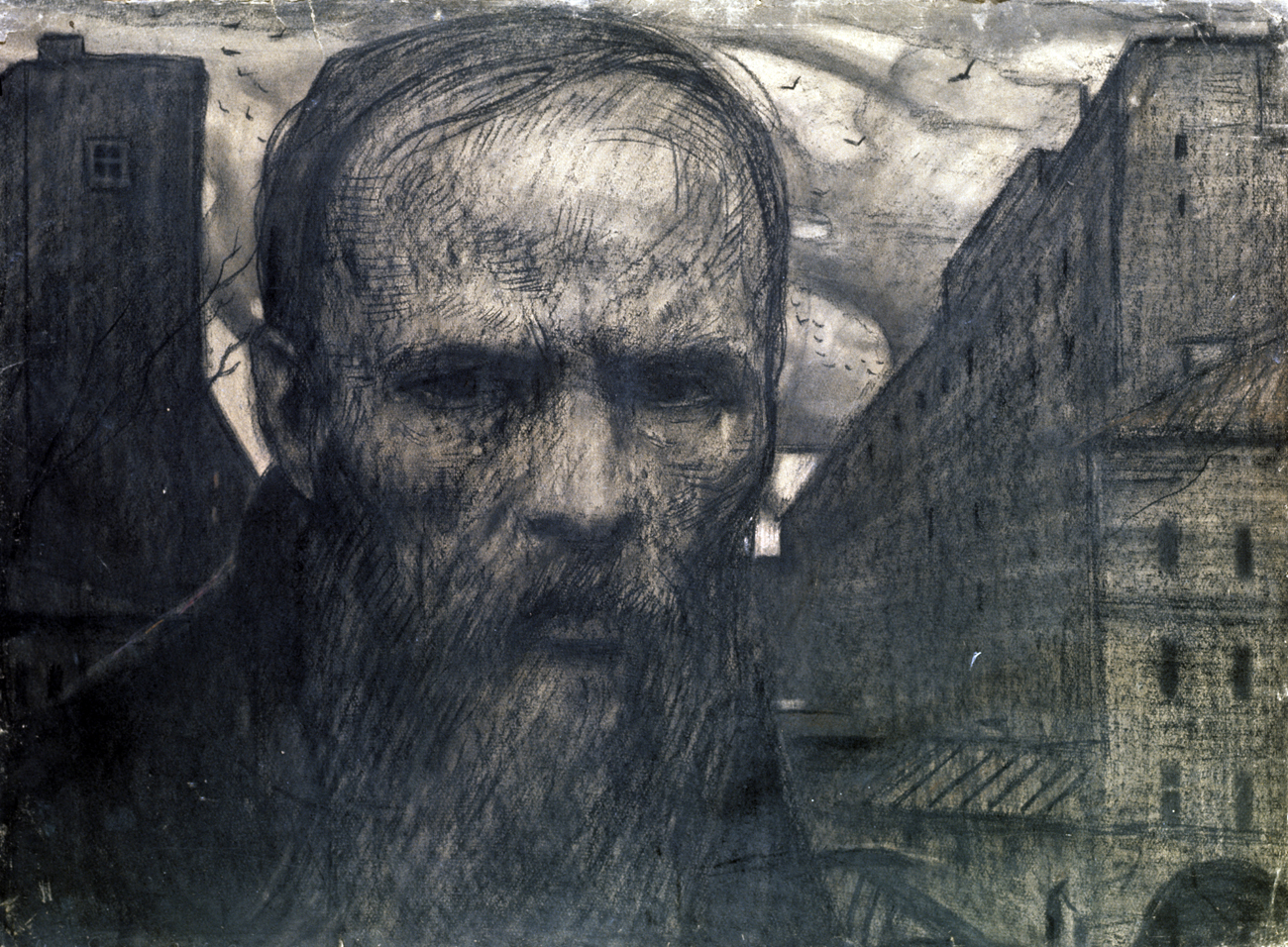
Georgy Taratorkin as Rodion Raskolnikov in 1970 'Crime and Punishment' movie.
Kinopoisk.RuIn August 1865, Gerasim Chistov, a merchant’s son and schismatic, was accused of killing two old women in order to rob their mistress. The apartment was strewn with items, and gold jewelry had been stolen from an iron chest. Both victims were killed with the same weapon: an axe. Many critics believe this true story inspired Fyodor Dostoevsky’s novel Crime and Punishment.
Hermann Hesse said that in Crime and Punishment Dostoevsky had managed to capture a whole period in world history, while Albert Camus said that reading the Russian writer’s novels had been a “soul-shaking experience” that informed all his own work. The contemporary Russian author Boris Akunin has written a novel called FM (in reference to Fyodor Mikhailovich Dostoevsky), which presents Raskolnikov’s story as a crime thriller, with the main character being the investigator Porfiry Petrovitch.
Since its first movie adaptation in the Russian Empire in 1909, the novel has been adapted for screen dozens of times, including the renowned 1969 production by Soviet director Lev Kulidzhanov. Many modern movies also pay homage to the book, with Woody Allen being known for his admiration of Dostoevsky. His films Match Point (2005) and Irrational Man (2015) show clear parallels to the work.Crime and Punishment has also greatly influenced the world of theater, too. Stage plays based on the novel were held all over Europe in the 19th century, with Paul Ginisty’s 1888 production at the Paris Odeon theater being among the most memorable. In 2016, the musical “Crime and Punishment” was staged in Moscow, while in London the novel was transformed into a rock musical.
Dostoevsky spent four years in a hard labor camp in Siberia (1850 to 1854) for disseminating a banned letter by the critic and commentator Vissarion Belinsky. He described the horrors of that period in the novel The House of the Dead. The years he spent in Siberian exile had a profound influence on the writer. Dostoevsky felt the ills of the time – widespread poverty, rising crime, heavy drinking – very keenly and wanted to shed light on them in his works.
However, he was constantly prevented from actually setting to work on his idea. He was chronically short of money and was stuck in a cycle of producing work to very short deadlines for a pittance. Finally, in 1865, the writer suggested to Andrei Krayevsky, the editor of the influential literary magazine Otechestvennye Zapiski, the idea of publishing a novella: “a psychological study of a crime.”
 Ilya Glazunov's Dostoyevsky. 1962. Source: Pavel Balabanov / RIA Novosti
Ilya Glazunov's Dostoyevsky. 1962. Source: Pavel Balabanov / RIA Novosti
Gradually, the novella grew into a full-scale novel. Dostoevsky gave up all other work and spent 1866 writing the novel, which was serialized in the Russky Vestnik literary journal. By his own admission, Dostoevsky worked on Crime and Punishment “like a convict in a labor camp,” without going out or meeting anyone at all. The book swiftly became a literary sensation.
Three notebooks with drafts and notes to Crime and Punishment have survived. In effect, they present three hand-written versions of the novel.
The notebooks reveal how long Dostoevsky himself spent looking for an answer to the main question in the novel: why did Raskolnikov commit murder? What brought about the schism – the name Raskolnikov derives from the Russian for “schismatic” – in the soul of the novel’s protagonist?
Each notebook offered a different interpretation. In the original novella, the main character killed one lowly being in order to use their money to bring joy to many wonderful people.In the second version, Raskolnikov is still driven by allegedly humanist ideas: to rid the world of a greedy and avaricious old hag for the benefit of those who have been humiliated and insulted. However, this paradoxical idea of a murder driven by love for other people has already begun to acquire power-seeking overtones.
In the third version, Dostoevsky extends this conceit, deciding that Raskolnikov is ruined by “the Napoleonic idea” – the desire to find out if he will be able to kill, and if he has the right to kill.
The notebooks also reveal Dostoevsky’s turmoil over the novel’s ending. One of the manuscript versions even contains a note that Raskolnikov decides to take his own life.
All rights reserved by Rossiyskaya Gazeta.
Subscribe
to our newsletter!
Get the week's best stories straight to your inbox